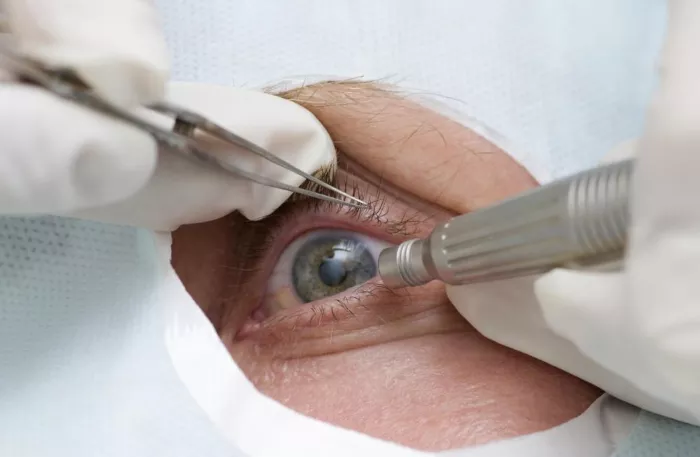A scarred retina can significantly impact your vision, causing blurriness, distortion, or even blindness. Scarring often results from conditions like diabetic retinopathy, retinal detachment, or trauma. In some cases, surgery is needed to remove the scar tissue and restore vision.
This article will provide a detailed guide on scarred retina surgery, including what it is, why it’s needed, the types of procedures available, and what to expect during recovery. By the end, you’ll have a clear understanding of how this surgery can help improve your vision and quality of life.
What Causes a Scarred Retina?
Scarring on the retina can occur due to several conditions, including:
Diabetic Retinopathy: High blood sugar levels damage blood vessels in the retina, leading to scarring.
Retinal Detachment: When the retina pulls away from its normal position, scar tissue can form during healing.
Trauma: Eye injuries can cause scarring on the retina.
Proliferative Vitreoretinopathy (PVR): A condition where scar tissue forms after retinal detachment surgery.
Scar tissue can distort the retina, leading to vision problems that may require surgical intervention.
Types of Scarred Retina Surgery
There are several surgical options for treating a scarred retina, depending on the severity and cause of the scarring:
1. Vitrectomy
Purpose: Removes the vitreous gel and scar tissue from the eye.
Procedure: The surgeon makes small incisions to remove the vitreous gel and carefully peel away the scar tissue. The eye is then filled with a saline solution, gas bubble, or silicone oil.
Recovery: Vision may be blurry for several weeks; avoid strenuous activities.
Risks: Infection, bleeding, or retinal detachment.
2. Membrane Peeling
Purpose: Removes scar tissue (epiretinal membrane) from the surface of the retina.
Procedure: The surgeon uses tiny instruments to gently peel away the scar tissue.
Recovery: Vision improves gradually over several weeks.
Risks: Retinal tears or infection.
3. Laser Surgery
Purpose: Treats underlying conditions like diabetic retinopathy to prevent further scarring.
Procedure: A laser is used to seal leaking blood vessels or shrink abnormal ones.
Recovery: Minimal downtime; patients can usually resume normal activities within a day.
Risks: Temporary blurred vision or mild discomfort.
4. Scleral Buckling
Purpose: Repairs retinal detachment that may lead to scarring.
Procedure: A silicone band is placed around the eye to push the wall closer to the detached retina.
Recovery: Moderate discomfort; full recovery takes 2-4 weeks.
Risks: Double vision or changes in eye shape.
When Is Scarred Retina Surgery Needed?
Surgery is typically recommended if:
- Scarring causes significant vision loss or distortion.
- The scar tissue is pulling on the retina, risking further damage.
- Other treatments, like laser therapy, have not been effective.
Your eye doctor will evaluate your condition and recommend the best course of action.
What to Expect During Surgery
Scarred retina surgery is usually performed under local or general anesthesia. Here’s what happens:
Preparation: The eye is cleaned, and anesthesia is administered.
Procedure: The surgeon removes the vitreous gel and scar tissue using specialized instruments.
Closure: The eye is filled with a saline solution, gas bubble, or silicone oil, and the incisions are closed.
Recovery: You’ll be monitored for a short time before going home.
The surgery typically takes 1-2 hours, and you may need to wear an eye patch for a day or two.
Recovery After Scarred Retina Surgery
Recovery varies depending on the type of surgery, but here are some general guidelines:
Immediate Aftercare:
- Use prescribed eye drops to prevent infection and reduce inflammation.
- Wear an eye shield at night to protect the eye.
Activity Restrictions:
- Avoid strenuous activities, heavy lifting, or bending over for several weeks.
- Follow your surgeon’s instructions on when to resume normal activities.
Follow-Up Appointments:
Regular check-ups are essential to monitor healing and check for complications.
Vision Changes:
- Your vision may be blurry or distorted during recovery.
- It may take weeks or months for your vision to stabilize.
Risks and Complications
While scarred retina surgery is generally safe, it does carry some risks, including:
- Infection.
- Bleeding.
- Increased eye pressure.
- Cataract formation.
- Vision loss (rare).
Your surgeon will discuss these risks with you and take steps to minimize them.
Conclusion
Scarred retina surgery is a vital treatment option for individuals with vision problems caused by retinal scarring. By understanding the different types of surgery, their benefits, and what to expect during recovery, you can approach treatment with confidence. If you’re experiencing symptoms like blurred vision, distortion, or vision loss, consult an eye specialist promptly. Early intervention can make a significant difference in preserving your sight.
If you have more questions about scarred retina surgery or need personalized advice, don’t hesitate to reach out to your eye care provider. Your vision is precious, and taking proactive steps to protect it is always worth it.
Frequently Asked Questions
1. How long does scarred retina surgery take?
Most procedures take 1-2 hours, but this can vary depending on the complexity.
2. Is scarred retina surgery painful?
Local or general anesthesia is used, so you shouldn’t feel pain during the procedure. Some discomfort may occur during recovery.
3. Can I drive after scarred retina surgery?
You’ll need someone to drive you home after surgery. Avoid driving until your doctor approves.
4. Will I need multiple surgeries?
In some cases, additional procedures may be needed to achieve the best results.
5. What happens if I don’t get surgery?
Without surgery, scarring can lead to permanent vision loss or blindness.
Related topics:
Can Optometrists Perform Cataract Surgery? Unraveling the Truth
Retina Transplant: A Comprehensive Guide to Restoring Vision

